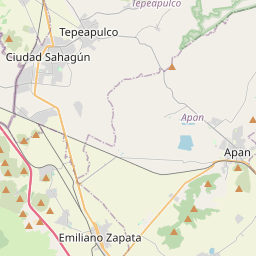Inscription
The Avenue of the Dead
El nombre de este eje urbano fue asignado por los mexica 600 años después de que Teotihuacan dejó de ser la ciudad que dominó el centro de México, por eso es que el nombre de esta calzada proviene del náhuatl Miccaotli, o "camino de los muertos", pues según algunas crónicas virreinales cuando los mexica observaron esta calzada y los montículos a sus lados, tuvieron la impresión de que se trataba de tumbas. De hecho la mayoría de los nombres con que conocemos a los grandes monumentos de Teotihuacan y a la ciudad misma
provienen del náhuatl y de las sugerencias de los arqueólogos, pues hasta el momento no existen evidencias de la lengua que hablaron los antiguos habitantes, ni del nombre que le dieron a esta esplendorosa ciudad. Conoce+Una vez que termines tu visita por la Zona Arqueológica, te recomendamos recorrer el Sendero Interpretativo Ecológico Cultural, donde podrás conocer más sobre la cultura teotihuacana y su relación con la naturaleza.
Para llegar al Sendero Interpretativo Ecológico Cultural te
sugerimos seguir la ruta del mapa que te llevará 6 minutos caminando. El tiempo estimado de recorrido en el sender es de 25 minutos.
English:
The Mexica named this urban axis 600 years after Teotihuacan was abandoned. That is why the name of this street is originated from the Nahuatl word Miccaotli (which means "path of the dead"). According to some viceregal chronicles, when Mexica people saw this street and the mounds on the sides, they believed that these mounds were tombs. In fact, most of the names of the Teotihuacan large monuments, as well as the name of the city itself, are originated from the Nahuatl language or archaeologist's suggestions, since, until now, there is no evidence about the language spoken by the ancient inhabitants or the name of this magnificent city either. Conoce+After visiting the archaeological site, we invite you to walk by the Ecological-Cultural Trial, where you will learn more about Teotihuacan's people and their relationship with nature. We suggest you to follow the path indicated in the
map, takin approximately 6 minutes to get there. The estimated walk time through the Ecological-cultural trial is 25 minutes.
Details
| HM Number | HM1ZZ4 |
|---|---|
| Tags | |
| Placed By | Instituto Nacional de Antropología e Historia (INAH) |
| Marker Condition | No reports yet |
| Date Added | Thursday, July 20th, 2017 at 7:01pm PDT -07:00 |
Pictures
Locationbig map






| UTM (WGS84 Datum) | 14Q E 516342 N 2177988 |
|---|---|
| Decimal Degrees | 19.69726667, -98.84406667 |
| Degrees and Decimal Minutes | N 19° 41.836', W 98° 50.644' |
| Degrees, Minutes and Seconds | 19° 41' 50.16" N, 98° 50' 38.64" W |
| Driving Directions | Google Maps |
| Closest Postal Address | At or near Acceso por Puerta 3, Estado de México , MX |
| Alternative Maps | Google Maps, MapQuest, Bing Maps, Yahoo Maps, MSR Maps, OpenCycleMap, MyTopo Maps, OpenStreetMap |
Is this marker missing? Are the coordinates wrong? Do you have additional information that you would like to share with us? If so, check in.
Nearby Markersshow on map
Late Occupation of Teotihuacan and the Mexica Presence
The Temple of Agriculture
The Quetzalpapálotl Architectural Complex
The Pyramid of the Moon
The Puma Mural
The History of Teotihuacán
The Importance of the Pyramid of the Sun
A Ceremonial Incense Burner
The Pyramid of the Sun
The Meaning of the Pyramid of the Sun
Maintenance Issues
- Is this marker part of a series?
- What historical period does the marker represent?
- What historical place does the marker represent?
- What type of marker is it?
- What class is the marker?
- What style is the marker?
- Does the marker have a number?
- What year was the marker erected?
- This marker needs at least one picture.
- Can this marker be seen from the road?
- Is the marker in the median?

Comments 0 comments